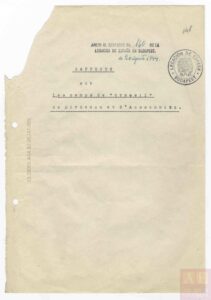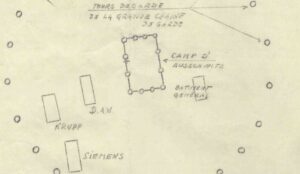Reminding is knowing who we are.
The Vrba-Wetlzer Report.

The Auschwitz Protocols are available on the Archives Portal Europe (APE).
The recent history of Europe is the history of the migrations that have taken place on our continent over the last 80 years. The Second World War and the immediate post-war reconstruction led to unprecedented forced population movements. Although deportation policies were not new in Europe, what was new was the systematic plan to relocate populations in masse for the purpose of extermination.
The memory of war, deportations and genocide is part of our lives and explains what we are as Europeans. For this reason, celebrating January 27th, the day on which the Nazi camp in Auschwitz-Birkenau was liberated in 1945, is to pay tribute to the victims of the Holocaust and to remember that we can never again descend into hell.
This killing camp, located in southern Poland, was made up of almost thirty industrial facilities. Approximately 1,300,000 Europeans were sent there. Entire families, most of them Jewish, Roma and Sinti from all areas occupied by the Reich, were selected upon arrival. Only those individuals fit for work were initially spared. Those who were not selected were immediately taken to the gas chambers. However, those selected for forced labor suffered living conditions that inevitably also led to certain death. Auschwitz was the most efficient extermination camp the Nazis ever built.
Although the Allies knew about Auschwitz and what was happening there since 1942, two young Slovak Jews who escaped from the camp, Rudolf Vrba and Alfred Wetzler, gave detailed testimony of what was occurring in April 1944. For the first time it was described in detail the operation of the camp by a report that incorporated the sketches of both the chambers and crematoria, as well as the figures of deportations by country. A copy of the document, which had been translated into German, came to the hands of the Jewish Aid and Rescue Committee in Budapest, which distributed it among the diplomatic legations, and ended up reaching the Allies. Spanish Ambassador Ángel Sanz Briz received a copy in French and he sent it to Madrid in August 1944 after having verified with other colleagues the truth of the story.
The testimony of Vrba and Wetzler determined the image that the Allies got about the Nazi camps, and what it was more important, the public opinion of their respective countries because the report was opened to the mass media. Indifference and skepticism faded when it became known, even among Germans who listened secretly BBC broadcasts. After the war, the accused Nazi chiefs in the Trial of Major War Criminals in Nuremberg had to see how the American prosecutor Jackson used the data of the forced deportations to Auschwitz mentioned in the report as evidence.
However, the forced deportations without the purpose of extermination were extended to shape the new post-Hitler Europe thanks to Postdam Agreement. Millions of people were uprooted and forced to get linguistic and cultural homogeneity in different countries. Then it was the Germans turn. For example, Hungary expelled 623,000 Germans, Romania 786,000, the re-established Czechoslovakia 3,000,000 and Poland 1,300,000.
Showing this kind of documents from our archives, such as the one drawn up by Vrba and Wetzler, is a moral obligation that we all have with the victims of the Holocaust and the people who helped to fight the Third Reich. They help to know what happened and also, hopefully, to prevent genocides or terrible acts such as the mass deportation of those considered different.
Jesús Espinosa-Romero
Deputy Director
General Archive of Administration- Spain
The documents: Auschwitz Protocols. Reports about the situation of Hungarian prisoners and deportees in German concentration camps, located in the General Archive of Administration – Spain, will be part of the roaming exhibitions of the European Digital Treasures project: Exiles, Migratory Flows and Solidarity.


